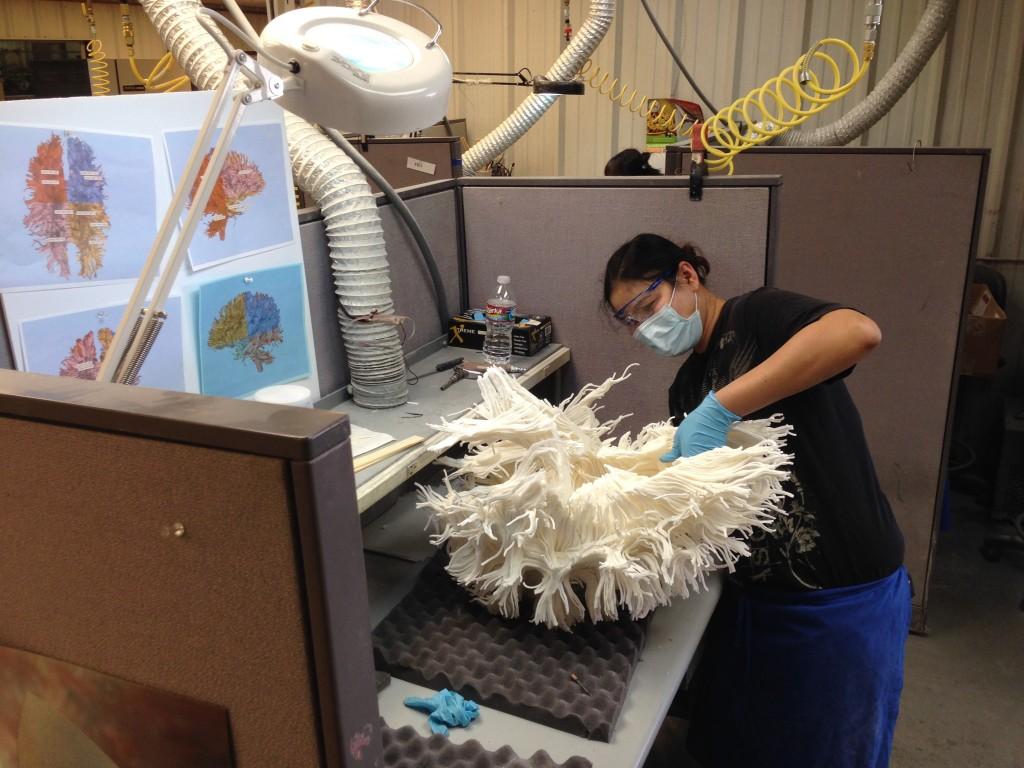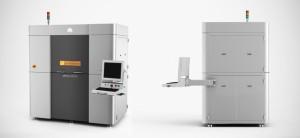Over the last few years researchers have learned a tremendous amount about the inner workings of the human brain. With that said, we have only begun to understand a small fraction of the bigger picture. Further research in the coming decades promise to have implications which could lead to cures for some of the most tragic diseases. From Alzheimer’s to Parkinson’s disease, to mental illness, new information could lead to some pretty amazing breakthroughs.
 There are all sorts of initiatives ongoing, including that of the Blue Brain Project, which was launched in 2005, and seeks to create a synthetic brain by reverse-engineering the mammalian brain down to the molecular level. Researchers believe that such progress is possible by the early to mid 2020’s.
There are all sorts of initiatives ongoing, including that of the Blue Brain Project, which was launched in 2005, and seeks to create a synthetic brain by reverse-engineering the mammalian brain down to the molecular level. Researchers believe that such progress is possible by the early to mid 2020’s.
Undoubtedly, the most important determinants of the project’s success are the scientists and researchers working on it. The youth of today, will become the researchers of tomorrow, who will ultimately determine the success of the Blue Brain Project, as well as other projects focusing on the human brain. So how do we get young people interested in such a field? Make it interesting to them, and provide them with the proper learning tools. This is just what The Franklin Institute is doing with their newest exhibit called ‘Your Brain‘.
The exhibit was headed by Dr. Jayatri Das, Chief Bioscientist at The Franklin Institute, who explained the reasoning for the creation of this interactive, educational gallery of sorts, as well as one particular centerpiece of the exhibit.
“Our philosophy behind our exhibits is to make real science approachable through hands-on, engaging exhibits,” said Dr. Das. “From an educational point of view, we knew that the concept of functional pathways needed to be an important aspect of brain science that was addressed in the exhibit, and diffusion tensor imaging gets to the heart of the real science through which scientists try to understand the wiring of these pathways. The 2D images we had seen were really beautiful, so we thought that a large-scale 3D print would be perfect as an intriguing, eye-catching sculpture that would serve as both a unique design focus and a connection to research.”
A 3D printed model of the various pathways within the brain, showing the patterns of each white matter strand sounded awesome, but the road to actually having one produced to the scale that the museum had hoped for was quite complicated.
“Everyone told us it was way too complex to handle on a 3D printer,” said Donna Claiborne, Exhibit Project Manager at The Franklin Institute. “We were surprised because everything we knew about 3D printing said that it was good with complex shapes.”
Claiborne was correct in her assertion that 3D printing was an outstanding tool for manufacturing complex shapes, however, something as complex as the brain, may have been outside the capabilities of even the most sophisticated 3D printers on the market today. The data file that the museum had created with the help of researcher Dr. Henning U. Voss, Associate Professor of Physics in Radiology at Weill Cornell Medical College, was so complex that it was a challenge just to view it on a computer, much less 3D print. It featured over 2,000 different white matter strands making up the shape of the brain’s pathways.
After searching long and hard, Museum officials found a company called Direct Dimensions, located in Owing Mills, MD.
“This work required a highly skilled technician with just the right disposition. Without the right human resources, this project would have never happened,” said Harry Abramson, Art Director for Direct Dimensions. “With about 2,000 strands to sort through, it was a task of immense proportions. Mind boggling in fact.”
The team used a 3D Systems’ manufactured sProHD 60 SLS 3D printer to print out the 26 inch long model in 10 different pieces. It took a staggering 20-22 hours for each piece to be printed out. They teamed with American Precision Printing (APP), a company which was contacted by Abramson to help out, and had the formidable task to piece together the 10 parts. Keep in mind that there were over 2,000 strands making up the model, most of which had to connect in the proper way, now that they had been sliced into 10 pieces. After hundreds of hours of tedious work, the brain was finally finished.
“The 3D printed model is awesome and utterly exceeds even my most optimistic expectations,” Said Dr. Voss. “This was a fantastic project with an amazing team of people who made it come together.”
Anyone wishing to visit the brain and all of its intricacies, can do so at the Franklin Institute immediately. Let us know if you have paid a visit in the 3D printed brain forum thread on 3DPB.com.
[Source: 3DSystems]Subscribe to Our Email Newsletter
Stay up-to-date on all the latest news from the 3D printing industry and receive information and offers from third party vendors.
You May Also Like
3D Printing News Briefs, April 13, 2024: Robotics, Orthotics, & Hypersonics
In 3D Printing News Briefs today, we’re focusing first on robotics, as Carnegie Mellon University’s new Robotics Innovation Center will house several community outreach programs, and Ugogo3D is now working...
Rail Giant Alstom Saves $15M with 3D Printing Automation Software 3D Spark
3D Spark has entered into a three-year deal with the rail giant Alstom. Alstom, a transport behemoth with annual revenues of $16 billion, specializes in the manufacture of trains, trams,...
Meltio Expands Global Reach with New Partnerships in the Americas and Europe
Spanish 3D printing manufacturer Meltio has expanded its sales network across the globe. With the addition of three new partners in the United States, Brazil, Argentina, and Italy, Meltio aims...
3D Printing Webinar and Event Roundup: April 7, 2024
Webinars and events in the 3D printing industry are picking back up this week! Sea-Air-Space is coming to Maryland, and SAE International is sponsoring a 3D Systems webinar about 3D...



































